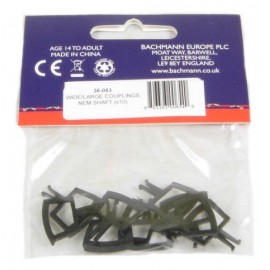Static grass puffer bottles work by manually charging model grass fibres with static electricity. When the charged...
No products
Product successfully added to your shopping cart
There are 0 items in your cart. There is 1 item in your cart.
Search Tips
What is a BR Mk1 coach?
The BR Mk1 coach (British Railways Mark 1) was a standard design of railway carriage introduced by British Railways in 1951. It became the mainstay of British passenger train travel during the 1950s and 1960s, designed to unify and modernise the rolling stock inherited from the "Big Four" railway companies after nationalisation in 1948. Before the Mk1's introduction, the variety of designs from different railway companies created inefficiencies and difficulties in maintenance and compatibility. The Mk1 addressed these issues by introducing a standardised coach that could be used across the entire British rail network.
Built primarily from steel, the Mk1 coaches were designed with a strong emphasis on safety and durability. They featured a robust underframe, which improved crashworthiness, and were built to higher standards than many pre-nationalisation coaches. This not only made them safer in the event of an accident but also ensured that they had a long service life. The design of the Mk1 coach also aimed to be practical for both passengers and railway operators, balancing comfort, ease of maintenance, and operational flexibility.
There were several different types of Mk1 coaches, each serving a specific purpose. These included corridor coaches, where passengers could move between compartments, non-corridor coaches, which did not allow movement between sections, and a range of specialised vehicles like buffet cars, brake vans, and sleeping cars. The Mk1 design was versatile and could be adapted to meet various needs, whether for long-distance express trains or local stopping services. Its modular design meant that components could be easily replaced, contributing to the coach's widespread use for several decades.
The Mk1 was also distinctive for its aesthetic design. It retained a more traditional look, blending elements of the older railway carriages with modern post-war design principles. The interiors were generally well-appointed for the time, featuring wood panelling and comfortable seating, although later versions became more functional as British Rail sought to cut costs. Many Mk1 coaches were also fitted with electric lighting and steam heating, which improved the passenger experience compared to earlier carriages.
While the BR Mk1 coaches began to be phased out from the 1970s onwards, with the introduction of the Mark 2 coaches and other more modern rolling stock, they continued to be used in regular service on many lines until the 1980s. Even after their official withdrawal from frontline service, Mk1 coaches remained in widespread use on heritage railways, where they are still a familiar sight today. Their solid construction and classic design have made them favourites for preservation.
Today, the BR Mk1 coach is a significant part of Britain’s railway heritage. Many have been restored and are used by railway enthusiasts on preserved lines across the UK. They often evoke a strong sense of nostalgia, recalling an era when train travel was at the heart of British life. The continued popularity of these coaches is a testament to their durability, adaptability, and the fondness with which they are remembered by generations of passengers.
Click here to receive the tips weekly in your mailbox. You can unsubscribe at any time.










